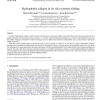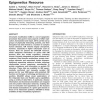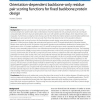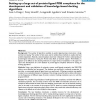215 search results - page 37 / 43 » Predicting the protein-protein interactions using primary st... |
CANDC
2006
ACM
13 years 7 months ago
2006
ACM
A model of hydrophobic collapse, which is treated as the driving force for protein folding, is presented. This model is the superposition of three models commonly used in protein ...
NAR
2011
12 years 10 months ago
2011
Chromatin modification (CM) is a set of epigenetic processes that govern many aspects of DNA replication, transcription and repair. CM is carried out by groups of physically inter...
GECCO
2007
Springer
14 years 1 months ago
2007
Springer
The protein folding problem consists of predicting the functional (native) structure of the protein given its linear sequence of amino acids. Despite extensive progress made in un...
BMCBI
2010
2010
Orientation-dependent backbone-only residue pair scoring functions for fixed backbone protein design
13 years 7 months ago
Background: Empirical scoring functions have proven useful in protein structure modeling. Most such scoring functions depend on protein side chain conformations. However, backbone...
BMCBI
2007
13 years 7 months ago
2007
Background: The number of algorithms available to predict ligand-protein interactions is large and ever-increasing. The number of test cases used to validate these methods is usua...




